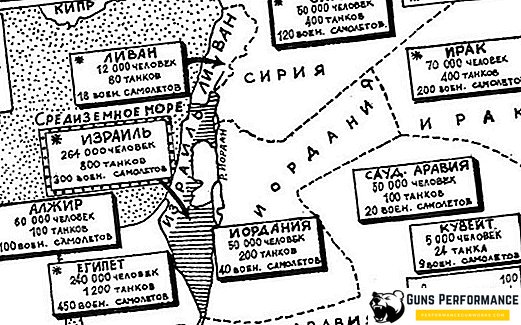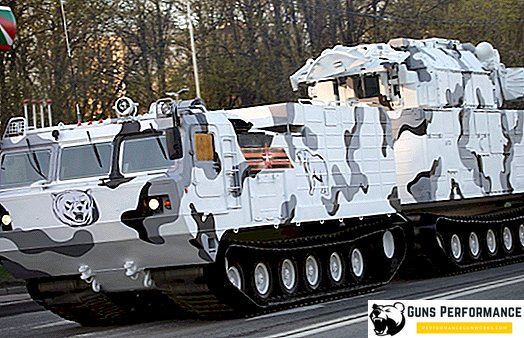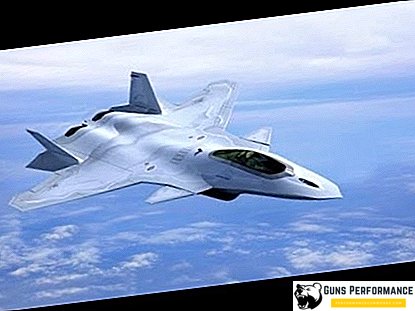Among the many aircraft that emerged from the time of the first flight of the Wright brothers, there are several unique machines, specially designed to perform special functions or to test unusual technical solutions. Many of these aircraft did not go into the series or were made in limited quantities.

Our material is about a completely unique aircraft, which was also designed for special work and made in a single copy. But this car is still in service, it serves people and does not get tired to impress with its epic power. This is the largest aircraft in the world - the An-225 Mriya transport aircraft.
The history of the creation of the An-225 "Mriya"
This machine was designed and built in a very short time: the first drawings appeared in 1985, and in 1988 a transport plane was already built. The reason for such a tight schedule is quite easy to explain: “Mriya” was created using well-developed components and assemblies of the An-124 Ruslan aircraft. The Mriya fuselage has the same transverse dimensions as the An-124, but longer than it, the wingspan and area increased. The same structure as in "Ruslan" has a wing, but additional sections have been added to it. The An-225 has two additional engines. The chassis of the aircraft is almost the same as the chassis of "Ruslan" - but it has seven instead of five racks. The cargo bay has been significantly changed. Initially, two aircraft were laid at the aircraft factory, but so far only one An-225 has been completed. The second copy of the unique aircraft is ready at about 70% and can be completed at any time with adequate funding. For its completion needed amount of 100-120 million dollars.

On February 1, 1989, the plane was shown to the general public, and in May of the same year, the An-225 made a non-stop flight from Baikonur to Kiev, carrying 60 tons of Buran on its back. In the same month, the An-225 delivered the Buran spacecraft to an air show in Paris and created a real sensation there. In total, the aircraft has 240 world records, including the transportation of the heaviest cargo (253 tons), the heaviest monolithic cargo (188 tons) and the longest cargo.

The An-225 Mriya was originally designed for the needs of the Soviet space industry. In those years, the Soviet Union built the Buran - its first reusable ship, the answer to the American shuttle. To implement this project, a transport system was needed, with which it was possible to transport large loads. It is for these purposes and thought "Mriya". In addition to the components and components of the spacecraft itself, it was necessary to transport parts of the Energia rocket, which also had colossal dimensions. All this was delivered from the production site to the final assembly points. The units and components of Energia and Buran were manufactured in the central regions of the USSR, and the final assembly of the space system took place in Kazakhstan, at the Baikonur cosmodrome. In addition, the An-225 was originally designed so that in the future it could transport the finished Buran spacecraft. An-225 could also transport bulky goods for the needs of the national economy, for example, equipment for the mining and oil and gas industries.
In addition to participating in the Soviet space program, the aircraft was to be used to transport oversized cargo over long distances. This work of the An-225 "Mriya" will be performed today.

The general functions and tasks of the machine can be described as:
- transportation of goods of general purpose (large-sized, heavy) with a total weight of up to 250 tons;
- inland non-stop transportation of goods weighing 180-200 tons;
- intercontinental transportation of goods weighing up to 150 tons;
- transportation of heavy oversized cargo on the external suspension with a total weight of up to 200 tons;
- use of the aircraft for the air launch of spacecraft.
Flying cosmodrome An-225 "Mriya"
This is not all. Other, even more ambitious tasks were set before the unique aircraft - and they were also associated with space. The An-225 Mriya was to become a kind of flying cosmodrome, a platform from which spacecraft and rockets would be put into orbit. "Mriya", according to the designers, should have been the first step for launching reusable Buran-type spacecraft. Therefore, initially, the designers had the task of making an aircraft with a lifting capacity of at least 250 tons.

The Soviet shuttle was supposed to start from the "back" of the aircraft. This method of launching vehicles into Earth orbit has many serious advantages. Firstly, there is no need to build very expensive ground launch complexes, and secondly, launching a rocket or a ship from an airplane seriously saves fuel and increases the payload of the spacecraft. In some cases, this may allow completely abandon the first stage of the rocket.
Various air start options are being developed at present. Especially actively working in this direction in the United States, there are Russian developments.
Alas, with the collapse of the Soviet Union, the "air start" project with the use of the An-225 was practically buried. This aircraft was an active participant in the program "Energy-Buran". The An-225 performed fourteen flights with the Buran on the top of the fuselage, as part of this program hundreds of tons of various cargoes were transported.

After 1991, the financing of the Energy-Buran program ceased, and the An-225 was left without work. Only in 2000, the modernization of the machine began to be used for commercial purposes. The An-225 Mriya has unique technical characteristics, a huge carrying capacity and can carry bulky cargo on its fuselage - all this makes the aircraft very popular for commercial traffic.
Since then, the An-225 has performed many flights and transported hundreds of tons of various cargoes. Some transport operations can be called unique and unparalleled in the history of aviation. The plane took part in humanitarian operations several times. After the devastating tsunami, he delivered electric generators to Samoa, transported construction equipment to Haiti destroyed by an earthquake, and helped eliminate the effects of the earthquake in Japan.
In 2009, the An-225 aircraft was modernized and its service life was extended.

The device of the aircraft An-225
The An-225 "Mriya" airplane is made according to the classical scheme, with high wings raised with a small sweep. The cabin is located in front of the aircraft, the cargo hatch is also located in the nose of the machine. The plane is made according to the two-keel scheme. Such a decision is due to the need to transport cargo on the aircraft fuselage. The glider of the An-225 has very high aerodynamic properties, the value of the aerodynamic quality of this machine is 19, which is an excellent indicator not only for transport, but also for passenger aircraft. This, in turn, seriously improved the performance of the aircraft and reduced fuel consumption.

Almost all the internal space of the fuselage occupies the cargo compartment. Compared with the An-124, it has become more by 10% (seven meters). At the same time, the wing span increased by only 20%, two more engines were added, and the aircraft’s payload increased by one and a half times. During the construction of the An-225, the drawings, components and assemblies of the An-124 were actively used, thanks to which the aircraft could be created in such a short time. Here are the main differences between the An-225 and the An-124 Ruslan:
• new center section;
• increased the length of the fuselage;
• single-tail tail unit replaced by two-tail tail;
• lack of tail cargo hatch;
• the number of racks of the main chassis increased from five to seven;
• fastening and pressurization system for external loads;
• two additional D-18T engines were installed.
In contrast to the "Ruslan", "Mriya" has only one cargo hatch in the nose of the aircraft. Like its predecessor, "Mriya" can change the ground clearance and the angle of the fuselage, which is very convenient during loading and unloading. The chassis has three pillars: the front two-post and two main, each of which consists of seven racks. In this case, all racks are independent of each other and are produced separately.

The AN-225 has six D-18T engines suspended under the wings, as well as two auxiliary power units located inside the fuselage.
The cargo compartment is sealed and equipped with all the necessary equipment for loading operations. Inside the fuselage, the An-225 can carry up to sixteen standard aircraft containers (each weighing ten tons), fifty cars, or any cargo weighing up to two hundred tons (turbines, especially large-sized cargo vehicles, generators). On top of the fuselage there are special mounts for the transport of bulky cargo.
For take-off without cargo, the aircraft needs a runway 2400 meters long, with a cargo - 3500 meters.

Specifications An-225 "Mriya"
Dimensions | |
| Wingspan, m | 88,4 |
| Length m | 84,0 |
| Height, m | 18,2 |
Weight, kg | |
| Empty | 250000 |
| Maximum takeoff | 600000 |
| Mass of fuel | 300000 |
| Engine | 6 * TRDD D-18T |
| Specific fuel consumption, kg / kgf · h | 0,57-0,63 |
| Cruising speed, km / h | 850 |
| Practical range, km | 15600 |
| Range of action, km | 4500 |
| Practical ceiling, m | 11000 |
| Crew | six persons |
| Payload kg | 250000-450000 |












